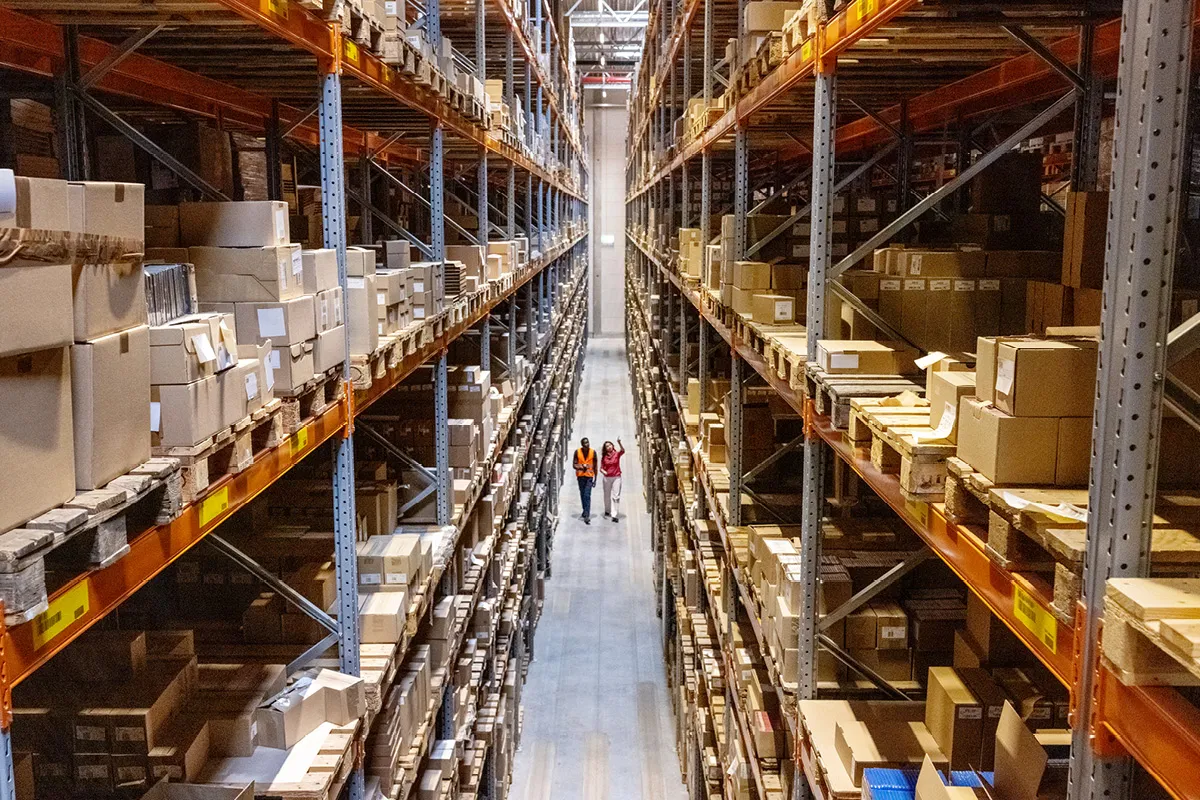Rising labor costs and shortages are disrupting the logistics sector’s economics, challenging companies to rethink efficiency and workforce models.
Labor, the logistics sector’s largest cost driver, is becoming more expensive and harder to source, putting pressure on margins across the value chain. In Germany, the statutory minimum wage will rise by +8.4% in 2026 and another +5.0% in 2027¹ ². The UK plans a +4.1% uplift in its National Living Wage³, while Austria’s collectively agreed wages have already increased by +8.5% in 2024/25⁴.
At the same time, Europe faces an acute driver shortage of roughly 426,000 positions⁵ – a gap that continues to widen as retirements outpace recruitment.
For an industry where personnel costs account for roughly half of total operating expenses⁶, these developments go beyond a temporary adjustment, requiring a structural reset of cost bases and competitiveness.
Margins under pressure
Logistics has long operated on thin profitability, with EBIT margins often below 6%.
An 8% wage increase can add around four percentage points to total costs, which would wipe out two-thirds of typical margins and push many operators into loss territory.
Yet pressure comes from multiple directions: expanded road tolls including CO₂ pricing⁷, higher financing costs, and wage inflation spilling across borders.
Insolvencies among small and mid-sized carriers rose by 12.5% in the first half of 2025, with more than 22 000 cases expected by year-end – the highest level since 2015⁸. The transport and logistics sector recorded the highest insolvency rate of any industry, with about 65 cases per 10,000 companies. These failures are driven not by the 2026 wage step itself but by accumulated cost strain and exhausted reserves.
For many operators, the upcoming wage increases could mark the tipping point between survival and consolidation.
A new commercial logic
Competing on price alone is no longer viable when costs are rising for everyone. Labor is now the decisive variable in logistics profitability. Success will depend on commercial discipline –understanding where value exists, passing on cost increases credibly, and focusing resources on business that sustains margin.
Three developments are redefining the landscape:
- Persistent wage inflation. Minimum-wage policies in Europe are being regularly reviewed to reflect inflation and labor-market pressures.
- Wage spillovers. When entry-level pay rises, higher-skilled roles also demand adjustment to maintain internal equity.
- Customer scrutiny. Customers generating the highest network cost (e.g. through extreme business peaks) are often those with the lowest willingness to pay.
This is the new reality: pricing excellence, contract design, and portfolio management will determine which companies remain competitive in 2026 and beyond.
What to do now
1. Develop true pricing excellence
Negotiations for 2026 rates are nearly complete. Companies that failed to secure sufficient increases must use early 2026 to recalibrate pricing.
The first step is analytical: model wage impacts by function, geography, and customer type. The next is commercial: translate those insights into differentiated pricing strategies, identifying where customers will accept higher rates because of service importance, reliability, speed, or other value-related factors.
Customers respond to facts, not appeals. Price increases should be positioned as a requirement to maintain quality and capacity. Arbitrary or poorly explained adjustments will face resistance; those that rest on transparent economics will gain acceptance.
Even with strong justification, some high-margin customers may reduce volumes temporarily. Retention programs, such as flexible capacity options or loyalty incentives, can help recover share quickly while protecting long-term relationships.
Timing is critical. Companies that act in the first quarter of 2026 will set the tone. Those that wait will find themselves in reactive negotiations as cost inflation compounds.
2. Build contractual resilience
Contract architecture determines whether higher labor costs translate into sustainable revenue surge. Too many logistics contracts still rely on fixed-rate renewals or manual negotiations rather than mechanisms that automatically adjust for structural cost changes.
A resilient long-term contract should include multi-factor indexation, linking rates to labor, fuel, toll, and energy indices. For long-term agreements, the clauses should automatically trigger adjustments when those indices move – beyond and on shorter notice than annual renegotiations.
Labor-trigger clauses, tied to official wage indices can further ensure that contractual pricing reflects cost realities.
Equally important is a structured surcharge framework and enforcement capabilities. Beyond fuel, labor surcharges, capacity-scarcity surcharges, and peak-season surcharges help companies reflect sudden cost shifts transparently while maintaining customer trust.
Contracts lacking such mechanisms effectively shift all labor-cost risk to the logistics provider – a position that will be untenable in 2026.
3. Manage retention and reconnection in a volatile customer landscape
As logistics providers implement potentially significant price increases in 2026 to offset rising labor costs, even well-justified adjustments may cause some customers to test alternative providers. Managing churn and winning back valuable accounts will therefore be essential to protect margins.
Leading operators are investing in churn prediction models and targeted win-back programs to identify risk early and re-engage selectively. Predictive analytics can flag warning signs such as declining shipment frequency or lower booking regularity, enabling proactive retention efforts. When customers do leave, understanding why is critical: if the reason was price, temporary loyalty incentives or short-term promotions can rebuild commitment without eroding long-term price discipline; if it was service quality, improved account management, customized solutions or priority access to capacity can restore trust.
2026 may also open doors to reconnect with former customers who are reconsidering partners as the market reshapes. In a year of widespread rate increases and intense competition, predictive retention and structured win-back strategies will be just as vital as pricing excellence to sustain profitability and long-term customer value.
Conclusion: 2026 will change everything
Is the 2026 wage increase a surprise? Hardly, it’s a scheduled transformation of cost structures. Labor is now the central determinant of competitiveness in European logistics.
Companies that act now by reinforcing pricing discipline, building contractual resilience, and focusing on commercially sound business will transform cost pressure into pricing excellence. Those that delay will face shrinking margins and urgent negotiations.
The message is clear: 2026 will not reward those who wait. The cost surge is certain; the outcome is not.
Sources and References
- Tippunkt, Germany: Minimum Wage 2025, 2026 and 2027, September 2025. https://tippunkt.de/en/minimum-wage-germany/
- PKF Deutschland, Minimum Wage Amounts (EUR 13.90 / €14.60), Issue 9-25 (2025). https://www.pkf.de/en/pkf-magazine/issues/2025/issue-9-25/minimum-wage-amounts
- GOV.UK, National Living Wage Estimate Update, 5 August 2025. https://www.gov.uk/government/news/national-living-wage-estimate-update
- Statistik Austria, Index of Agreed Minimum Wages – annual development +8.5% in 2024, September 2025. https://www.statistik.at/en/statistics/labour-market/labour-costs-and-index-of-agreed-minimum-wages
- Business Wire / ResearchAndMarkets, European Road Freight Transport Market Report 2025: Persistent Driver Shortages with 426 000 Unfilled Positions, 2025. https://www.businesswire.com/news/home/20250701607310/en/European-Road-Freight-Transport-Market-Report-2025-European-Road-Freight-Faces-Persistent-Driver-Shortages-with-426000-Unfilled-Positions-ResearchAndMarkets.com
- DSLV Bundesverband Spedition und Logistik, Kostenstruktur im Straßengüterverkehr (2024). https://www.dslv.org
- Federal Office for Logistics and Mobility (BALM), CO₂-based Road Toll Expansion 2024. https://www.balm.bund.de
- Reuters, German Business Insolvencies Up 12.2% in H1 2025, 11 September 2025. https://www.reuters.com/markets/europe/german-business-insolvencies-up-122-first-half-year-2025-09-11/
- Financial Times, Temu and Shein Reshape European Logistics, 2024. https://www.ft.com








